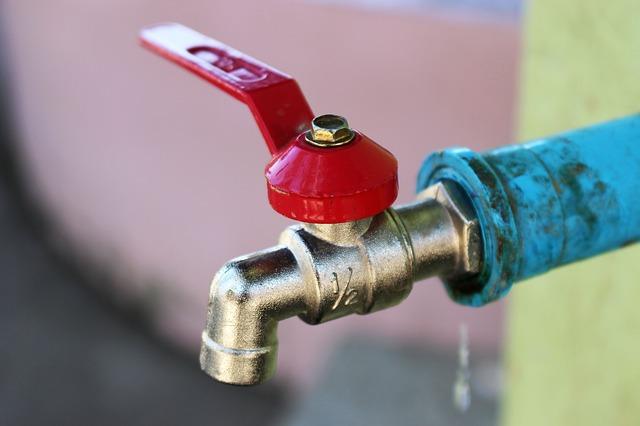
Introduction
Water shut off valves are crucial components in plumbing systems, serving as the first line of defense against leaks, bursts, and other water-related emergencies. Among the various types available, plastic water shut off valves offer a lightweight, affordable, and corrosion-resistant solution for controlling water flow. In this article, we delve into the intricacies of plastic water shut off valves, exploring their composition, functionality, advantages, and drawbacks to provide valuable insights for homeowners and professionals alike.
Understanding Plastic Water Shut Off Valves
Composition and Materials
Plastic water shut off valves are typically crafted from various polymers, each offering distinct properties suited to different applications. Common polymers used include polyvinyl chloride (PVC), acrylonitrile butadiene styrene (ABS), and polypropylene (PP). These materials are often reinforced with additives such as fiberglass or carbon fiber to enhance strength and durability, ensuring longevity in demanding environments. Factors such as chemical resistance, temperature tolerance, and UV stability influence the choice of materials in valve construction.
Functionality and Mechanism
Plastic water shut off valves come in different types, including ball valves, gate valves, and butterfly valves, each employing unique mechanisms for controlling water flow. Ball valves, for instance, utilize a spherical disc to regulate flow by rotating a handle or lever. Gate valves employ a gate or wedge mechanism to block or allow passage, while butterfly valves use a disc mounted on a rotating shaft to control flow. These valves can operate manually or automatically, with options for lever, wheel, or actuator-based controls, providing flexibility in usage. Pressure and flow control capabilities vary depending on valve design and specifications, allowing for precise adjustment to meet specific requirements.
Installation and Maintenance
Installing a plastic water shut off valve requires attention to detail to ensure proper functionality and leak-free operation. Mounting procedures may involve threading, solvent welding, or compression fittings, depending on valve and pipe configurations. Sealants such as Teflon tape or pipe dope may be used to enhance joint integrity and prevent leaks. Routine maintenance involves periodic inspection for signs of wear, corrosion, or damage, with replacement or repair as necessary. Proper care and attention can prolong the lifespan of plastic water shut off valves and prevent costly plumbing mishaps.
Advantages and Disadvantages
Advantages of Plastic Water Shut Off Valves
Plastic water shut off valves offer several advantages over their metal counterparts. Their inherent corrosion resistance makes them ideal for use in humid or corrosive environments where metal valves may degrade over time. Additionally, plastic valves are generally more affordable than metal valves, making them a cost-effective choice for budget-conscious consumers. Their lightweight nature and ease of handling simplify installation and maintenance procedures, reducing labor costs and time.
Disadvantages of Plastic Water Shut Off Valves
Despite their advantages, plastic water shut off valves have limitations that must be considered. One significant drawback is their limited temperature range compared to metal valves, making them unsuitable for high-temperature applications such as hot water lines or steam systems. Plastic valves are also more vulnerable to physical damage from impact or pressure, which can lead to cracking or deformation. Environmental concerns regarding plastic waste and recycling further underscore the need for responsible usage and disposal practices.
Tips for Choosing and Using Plastic Water Shut Off Valves
Considerations for Selection
When choosing a plastic water shut off valve, factors such as the intended application, compatibility with existing plumbing systems, and the reputation of the manufacturer should be taken into account. Selecting the appropriate valve size, pressure rating, and connection type ensures optimal performance and longevity. Consulting with a knowledgeable plumber or valve specialist can provide valuable guidance in selecting the right valve for your specific needs.
Installation and Operation Guidelines
Proper installation and operation of plastic water shut off valves are essential for reliable performance and leak-free operation. Ensure that the valve is securely mounted in the correct orientation, with proper alignment and clearance for operation. Use recommended sealants and fittings to prevent leaks and ensure a tight seal. When operating the valve, avoid excessive force or over-tightening, as this can cause damage to the valve or plumbing components. Familiarize yourself with emergency shut off procedures in case of leaks or emergencies, and keep necessary tools and supplies on hand for quick repairs.
Conclusion
Plastic water shut off valves offer a practical and cost-effective solution for controlling water flow in residential and commercial plumbing systems. Their lightweight construction, corrosion resistance, and affordability make them a popular choice for various applications. However, it is essential to consider their limitations and follow proper installation and maintenance practices to ensure optimal performance and longevity. By selecting the right valve, adhering to installation guidelines, and practicing responsible usage, homeowners and professionals can enjoy reliable water flow control and peace of mind.



